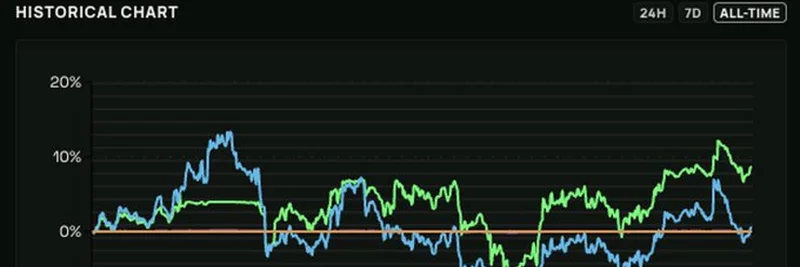If you’ve been watching the crypto markets lately, you might’ve noticed SOL (Solana’s native token) has been a bit of a rollercoaster. For the past 30 days, it hasn’t exactly been soaring, but one savvy trader, Bradydon from HawkFi.ag, turned this stagnant period into a win. How? By leveraging automated liquidity providing (LP) on Orca, a popular decentralized exchange (DEX) on Solana, and raking in an impressive 8.6% yield. Let’s break down this strategy and see how you can apply it too!
What’s the Secret Sauce?
Bradydon shared a detailed thread on X (check it out here) that dives into his favorite “HawkFi playbook.” This approach uses Orca’s concentrated liquidity automated market maker (CLMM) to optimize returns, even when the market isn’t moving much. Here’s the gist:
- Screening the Best Pools: Bradydon scans top pools on Orca, Meteora, and Raydium to find the most profitable opportunities. For this case, the SOL-USDC pair with a 0.04% tick spacing stood out.
- Automated Rebalancing: With a 30-minute autorebalance (or 1-minute for the risk-takers), the strategy keeps his liquidity in the optimal price range to earn fees. There’s even a “directional autorebalance” set to “up-only,” meaning it adjusts upward when prices rise.
- Autocompounding: This feature reinvests earnings automatically, boosting the yield over time.
- Risk Management: A stop-loss feature (coming soon) will add an extra layer of protection.
The chart Bradydon shared shows a side-by-side comparison: while holding SOL yielded just 0.47% and USDC a measly 0.01%, the LP strategy delivered that sweet 8.6% return. The historical chart highlights how the LP line (green) consistently outperformed the “HODL SOL” (blue) and “HODL USDC” (orange) lines over the past month.
Why Orca and Solana?
Orca is a standout on the Solana blockchain, known for its user-friendly interface and advanced CLMM features. Unlike traditional AMMs (automated market makers) like Uniswap, Orca’s Whirlpool program lets liquidity providers concentrate their funds in specific price ranges. This means higher capital efficiency and potentially bigger rewards—perfect for a market like SOL-USDC, where price movements can be unpredictable.
Solana itself is a high-speed, low-cost blockchain, making it a hotspot for DeFi (decentralized finance) enthusiasts. By pairing SOL with USDC (a stablecoin), Bradydon minimized exposure to wild price swings while still capitalizing on trading fees.
How Can You Get Started?
If this sounds intriguing, here’s a beginner-friendly roadmap:
- Set Up a Wallet: Use a Solana-compatible wallet like Phantom or Solflare.
- Fund It: Deposit some SOL and USDC. Start small if you’re new!
- Explore Orca: Head to orca.so to connect your wallet and browse liquidity pools.
- Join a Pool: Look for the SOL-USDC pool with a low tick spacing (like 0.04%) for better efficiency.
- Automate with HawkFi: Check out HawkFi.ag for tools to automate rebalancing and compounding.
Bradydon’s thread also teases a 1-minute tutorial for Orca automations, so keep an eye on his updates for more hands-on guidance.
The Bigger Picture: Yield Farming in 2025
This strategy fits into the broader trend of yield farming, where crypto holders lend or stake their assets to earn passive income. With SOL’s market stabilizing and DeFi tools like HawkFi evolving, 2025 could be a golden year for smart LP strategies. Just remember: with higher yields come higher risks, like impermanent loss (when prices shift significantly) or smart contract bugs. Always do your homework and start with what you can afford to lose.
Final Thoughts
Bradydon’s 8.6% yield on SOL-USDC LP is a testament to the power of automation and strategic pool selection. Whether you’re a DeFi newbie or a seasoned trader, this HawkFi playbook offers a fresh way to make the most of Solana’s ecosystem. Got questions? Drop them in the comments, and let’s dive deeper into the world of meme tokens and beyond at meme-insider.com!



